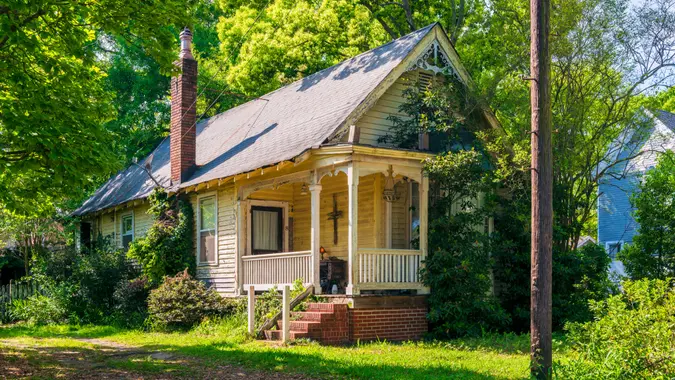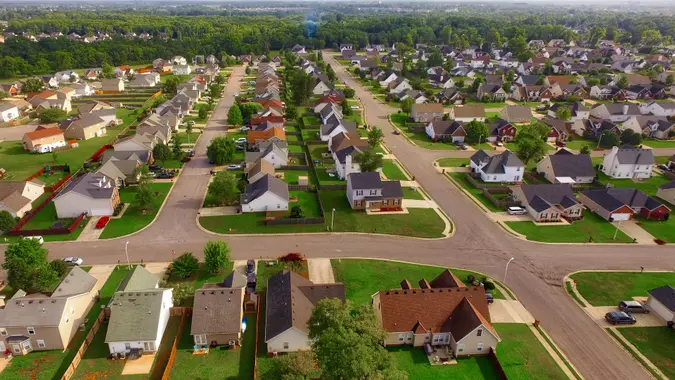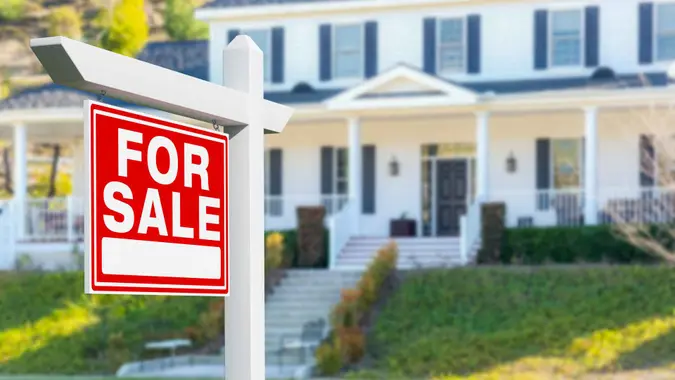I’m a Real Estate Agent: These 5 Features Can Drop Your Home’s Value by at Least $10K

Commitment to Our Readers
GOBankingRates' editorial team is committed to bringing you unbiased reviews and information. We use data-driven methodologies to evaluate financial products and services - our reviews and ratings are not influenced by advertisers. You can read more about our editorial guidelines and our products and services review methodology.

20 Years
Helping You Live Richer

Reviewed
by Experts

Trusted by
Millions of Readers
Your home is your castle. It’s the place where you made major memories, from raising a family to getting your dream job. Those memories make your house worth a million bucks. But the prospective buyers for your home aren’t concerned with the value of your memories — they’re interested in a space they can call their own. And they’ve noticed that odd stain or smell that you haven’t seen.
Certain features or issues like these can keep you from a sale or knock the price down considerably — potentially upwards of $10,000. However, if you have a trusted real estate agent, they can point out the ways your home sweet home could sour buyers.
1. Poor Exteriors
When buyers pull up to your home for the first time, they don’t want to see cracked concrete, faded siding or an overgrown yard — especially if the other homes in the neighborhood look polished and well-maintained.
According to Jacob Naig, licensed agent, real estate investor and owner of We Buy Houses in Des Moines, buyers will assume that the less-than-stellar look of the outside reflects the interior. It may be suitable for the Addams Family, but not for theirs.
Can these cracks and splotches really matter so much? Naig said yes, recalling how some TLC on the exterior of one client’s home brought up the price.
“We had one listing last year where we bought paint, mulch and a new front door for just shy of $2,500. It went to contract $16,000 over prelisting comps,” he said. “First impressions count much more than sellers realize.”
2. Smells and Odors
You’ve lived with Fluffy and Fido — not to mention Grandpa and his pipe — for so long that you don’t notice their smells anymore. Buyers will. Naig said that things like pet smells, moldy basements or heavy traces of cigarette smoke send one message to a buyer: “This house needs detoxing.” And they likely won’t want to be the ones who do it.
Naig remembers a home on the market that was “ruined by smoke and stuck at $199,000 with no takers.” His team brought in ozone machines, cleaned the ductwork and repainted the walls using odor-blocking primer.
“After cleanup, it appraised at $214,000 and sold too,” he said. “A clean nose is five figures.”
3. Water Damage
Another thing that prospective buyers absolutely don’t want to see? Signs of water damage — like a discolored ceiling, warped baseboards or that overall classic basement mustiness — can also drop your home’s value.
“In Des Moines, where many older homes struggle with drainage issues, I’ve seen buyers shave $25,000 off the price upon seeing unattended-to water problems,” Naig said. “I always recommend prelisting mitigation: Put in a sump pump, seal the cracks in the foundation and show the receipts. Prospective buyers know it when they see it.”
4. Clutter and Delayed Maintenance
That cluttered living room and door slightly off its hinge doesn’t just irritate your spouse — it can also alienate buyers. For Naig, issues like sticky or inoperable doors, cracked windows, missing trim or dead outlets aren’t necessarily deal-breakers in and of themselves, but piled together, “they scream neglect,” making them bad news in buyers’ minds.
“Buyers begin to take the position that everything is broken. I encourage sellers to do a full prelisting walk through with a punch list and we either address the repairs or price accordingly,” he said. “In some cases, we even give a ‘credit for repairs’ as a marketing tool — but only after showing them what those costs are through written estimates. Transparency is better than silence.”
5. Original Roof or HVAC With No Paperwork
Even if the systems are still functioning, if you’ve got a roof that has already passed its 20th birthday or a furnace that is older than 15 years — and you don’t have any records for them — buyers will beware. Naig said that buyers begin doing the math and adding up the repair costs.
“I warn my clients that they should be replaced if they’re actually failing — or at least be able to demonstrate service history, reports of inspection or warranties,” he said. “The value could be preserved with documentation.”
More From GOBankingRates
 Written by
Written by  Edited by
Edited by 

























